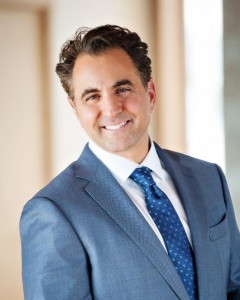 In a previous post, I discussed the truth about whole grains and explained what to look for in the food label. The word “whole” must appear in the first ingredient, like whole grain, whole wheat or stone-ground whole.
In a previous post, I discussed the truth about whole grains and explained what to look for in the food label. The word “whole” must appear in the first ingredient, like whole grain, whole wheat or stone-ground whole.
If the word “whole” doesn’t appear until the second ingredient, that product could contain as little as one percent of whole grain. It’s almost like the United States Department of Agriculture (USDA) has created gigantic loopholes that food manufacturers drive through like a runaway truck.
Food labeling is overwhelming and confusing, which makes it difficult for us to evaluate food products and determine what we should be consuming and feeding to our children.
I wish it was as simple as it was 200 years ago. Before the industrial revolution, you really didn’t need food labels. All food was organic because that’s the way it was naturally designed. Food was grown in non-contaminated soil, harvested and eaten before it spoiled.
Today, you have to understand how the government regulates food labels in order to determine whether a food product purchased in a store is truly organic.
First, let’s define the word “organic.” Organic food is free of antibiotics, hormones, genetic engineering, genetic modification, radiation, and synthetic pesticides and fertilizers. If you want to purchase organic foods, which I highly recommend, “100% organic” must be the first words you see on the food label. This means the product contains only organic ingredients.
If the food label just says “organic” without “100%” in front of it, 95 percent of the ingredients must be organic. If the food label says “made with organic ingredients,” only 70 percent of the ingredients must be organic.
I’m guessing you’ve probably purchased food products because they were marketed as “natural” or “all-natural.” According to the USDA, these products don’t contain any artificial ingredients or preservatives. However, food products that include “natural” or “all-natural” in the ingredients list on the label can contain antibiotics, growth hormones and other additives.
That doesn’t sound very natural to me.
Another misleading and misunderstood term is “free-range,” which basically means eggs are produced by chickens that are allowed to roam outside a bit instead of being confined to a cage 24 hours a day.
USDA regulations don’t define the quality or size of the outdoor environment or the minimum time that the chickens must spend outside.
“Cage-free” is even worse. That means the chickens released from their cages may only be permitted to roam inside barn without ever seeing the light of day. Again, the USDA doesn’t set standards for the quality or size of the roaming area or the time spent outside of the cage.
These are just a few examples of the little nuances that the USDA throws at us – nuances that food manufacturers love because they can market products in a misleading way. The majority of the U.S. population knows nothing about these distinctions.
Obviously, we can’t depend on the government to make things easy for us, and we can’t depend on food manufacturers to be straight with us. We need to take it upon ourselves to read labels, understand what they mean and make smart choices.
If you see a food label that you find misleading, do some research and educate yourself before you put unhealthy substances in your body and your children’s bodies. If you have any questions about food labels, please email me at jproodian@naturalhc.com.
 Dr. James Proodian is an accomplished chiropractic physician and health educator who founded Proodian Healthcare Family of Companies to help people feel better, function better, and live longer. His expertise for the past two decades has been in physical rehabilitation, and he has successfully established himself as a spinal specialist. In his practice, he advocates the science of functional medicine, which takes an integrative approach to treating patients by addressing their physical, nutritional, and psychological needs. Alarmed by the escalation of complex, chronic illness in our country, Dr. Proodian has been speaking to companies and organizations through his “Wellness at Work” program since 1994, motivating thousands of people to make positive lifestyle choices and lead healthier, more productive lives. He can be heard weekly on his radio program, “Proodian Healthcare By Design,” on Tandem Radio.
Dr. James Proodian is an accomplished chiropractic physician and health educator who founded Proodian Healthcare Family of Companies to help people feel better, function better, and live longer. His expertise for the past two decades has been in physical rehabilitation, and he has successfully established himself as a spinal specialist. In his practice, he advocates the science of functional medicine, which takes an integrative approach to treating patients by addressing their physical, nutritional, and psychological needs. Alarmed by the escalation of complex, chronic illness in our country, Dr. Proodian has been speaking to companies and organizations through his “Wellness at Work” program since 1994, motivating thousands of people to make positive lifestyle choices and lead healthier, more productive lives. He can be heard weekly on his radio program, “Proodian Healthcare By Design,” on Tandem Radio.